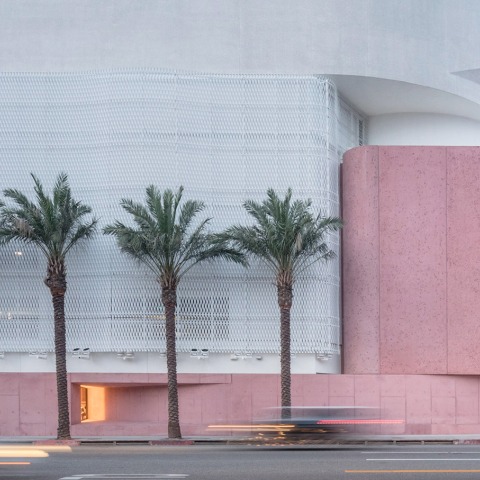David Adjaye was born in Dar es Salaam, Tanzania, in 1966. The son of a Ghanaian diplomat who has lived in Tanzania, Egypt, Yemen, and Lebanon before moving to Britain at the age of nine, he led a privileged life and was privately educated. He earned his BA at London South Bank University, before graduating with an MA in 1993 from the Royal College of Art. In 1993, the same year of graduation, Adjaye won the RIBA Bronze Medal, a prize offered for RIBA Part 1 projects, normally won by students who have only completed a bachelor's degree.
Previously a unit tutor at the Architectural Association, he was also a lecturer at the Royal College of Art. After very short terms of work with the architectural studios of David Chipperfield (London) and Eduardo Souto de Moura (Porto), Adjaye established a practice with William Russell in 1994 called Adjaye & Russell, based in North London. This office was disbanded in 2000 and Adjaye established his own eponymous studio at this point.
Recent works include the Museum of Contemporary Art in Denver, the Nobel Peace Centre in Oslo, and the Skolkovo Moscow School of Management completed in 2010. On April 15, 2009, he was selected in a competition to design the $500 million National Museum of African American History and Culture, part of the Smithsonian in Washington, D.C., planned to open in 2015. His design features a crown motif from Yoruba sculpture.
Alongside his international commissions, Adjayes work spans exhibitions, private homes, and artist collaborations. He built homes for the designer Alexander McQueen, artist Jake Chapman, photographer Juergen Teller, actor Ewan McGregor, and artists Tim Noble and Sue Webster. For artist Chris Ofili, he designed a new studio and a beach house in Port of Spain. He worked with Ofili to create an environment for the Upper Room, which was later acquired by Tate Britain and caused a nationwide media debate. He also collaborated with artist Olafur Eliasson to create a light installation, Your black horizon, at the 2005 Venice Biennale. He has also worked on the art project Sankalpa with director Shekhar Kapur. Adjaye coauthored two seasons of BBC's Dreamspaces television series and hosts a BBC radio program. In June 2005, he presented the documentary, Building Africa: Architecture of a Continent. In 2008, he participated in Manifesta 7.
In February 2009, the cancellation or postponement of four projects in Europe and Asia forced the firm to enter into a Company Voluntary Arrangement (CVA), a deal to stave off insolvency proceedings which prevents financial collapse by rescheduling debts – estimated at about £1m – to creditors.
Adjaye currently holds a Visiting Professor post at Princeton University School of Architecture. He was the first Louis Kahn visiting professor at the University of Pennsylvania, and was the Kenzo Tange Professor in Architecture at Harvard Graduate School of Design. In addition, he is a RIBA Chartered Member, an AIA Honorary Fellow, a Foreign Honorary Member of the American Academy of Arts and Letters, and a Senior Fellow of the Design Futures Council. He also serves as member of the Advisory Boards of the Barcelona Institute of Architecture and the London School of Economics Cities programme.
The studio's first solo exhibition: "David Adjaye: Making Public Buildings" was shown at the Whitechapel Gallery in London in January 2006, with Thames and Hudson publishing the catalogue of the same name. This followed their 2005 publication of Adjaye's first book entitled "David Adjaye Houses".






































